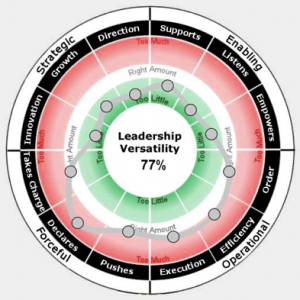
I described to Manoel that he would be required to lean in, dig deep and, by doing so, would emerge stronger and a more successful leader. I painted a picture of a tough love scenario and told him he would never find a stronger advocate than I, to give him what he needed. My sense was that this was not a situation for a coach who was timid or uncomfortable with sharing tough feedback. I wanted to provide Manoel with a true reality check of what to expect in working with me over the next six months.
One of my requests to the company was that I would have access to Manoel’s manager for “check-in” calls and access to HR. This was important to identify ways that the company might have been complicit in his leadership derailment, as is often the case. I needed to ensure that during this coaching engagement, learning took place by Manoel, the project team, and the organization.
I was pleasantly surprised to receive a call from both HR and Manoel that I had been selected as the coach of choice.
ASSESSMENT
In each coaching engagement, coaches must utilize the appropriate assessment tools, gather data, and interpret their results accurately in planning the coaching engagement. Selecting a combination of assessments helps to:
- Uncover the mental model operating as the coachee’s leadership style;
- Assess personality, preferences, learning style, strengths and leadership derailers;
- Pay attention to both quantitative and qualitative data;
- Uncover perspectives across the organization from supervisor(s), peers, team members, key stakeholders and direct reports; and,
- Identify behavioral incidents to use as teachable moments during coaching.
For Manoel, I selected the following assessments:
- The Leadership Versatility Index 360 that identifies overused strengths.
- HOGAN HDS that assesses 11 risk factors that may lead to leadership derailment.
- The Myers Briggs Type Inventory (MBTI) to provide insight on Manoel’s preferences as a leader.
The Fundamental Interpersonal Behavior Orientations
The results of these assessments are shown below.
Leadership Versatility 360

The outer perimeter provides the four areas of versatile leaders on opposing sides: Strategic and Operational refers to a leaders’ focus and Enabling and Forceful pertains to “how” work is completed. The black area identifies specific competencies for each.
The red zone indicates “too much focus”, the green zone indicates “too little focus” and the white zone is “just the right amount of focus”.
Download Article 1K Club
















